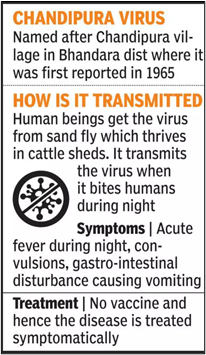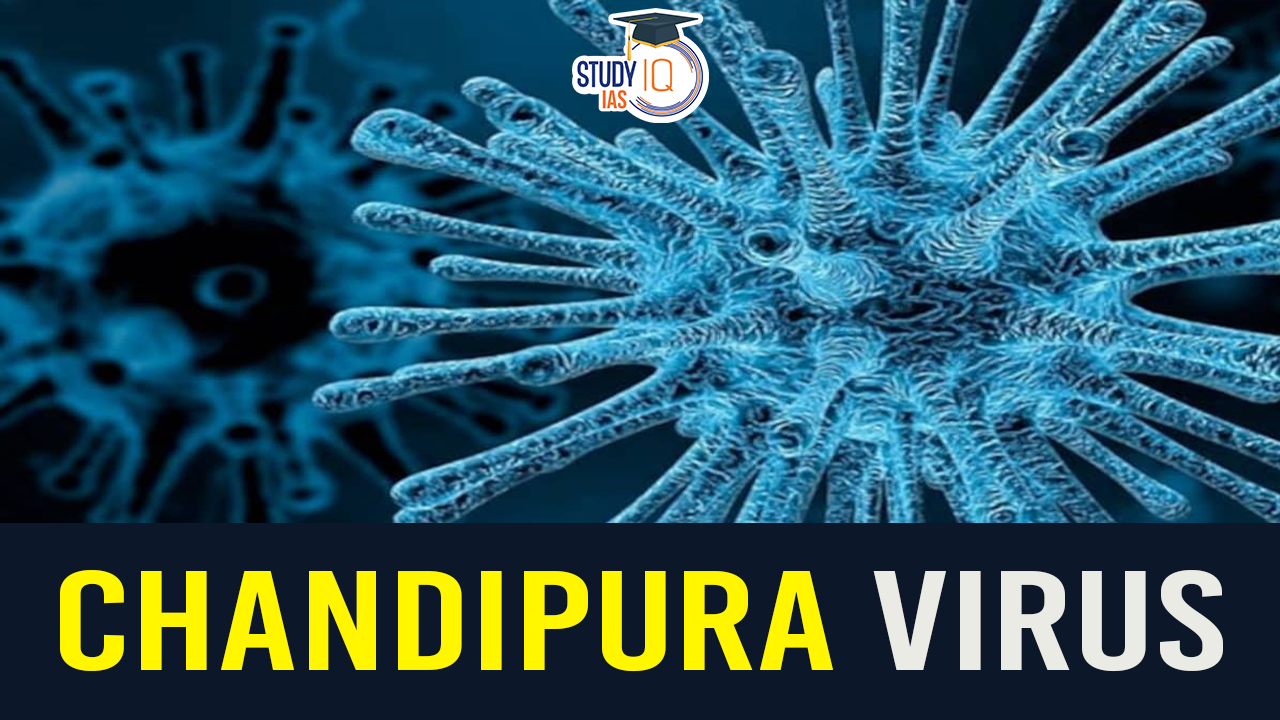Table of Contents
The Chandipura virus (CHPV), a member of the Rhabdoviridae family, has recently caused significant concern in Gujarat, India, where the toll of suspected cases has risen to 20, including two deaths in Ahmedabad city. This outbreak has raised alarms due to its history and severe impact, particularly on children. Here’s an in-depth look at CHPV, including its symptoms, treatment, prevention, and more.
Chandipura Virus in Gujarat
Gujarat is currently grappling with an outbreak of Chandipura Virus (CHPV), which has resulted in 20 suspected cases, including two confirmed deaths in Ahmedabad city. Health officials are on high alert as 35 individuals exhibiting symptoms have been admitted to hospitals across various districts. This outbreak has prompted a robust response from health authorities to control the spread and manage the impact of the virus.

What is Chandipura Virus (CHPV)?
CHPV is a neurotropic virus belonging to the Vesiculovirus genus within the Rhabdoviridae family, which also includes rabies. Discovered in 1965 near Nagpur, Maharashtra, it is primarily transmitted by sandflies, particularly the female phlebotomine sandfly, which is prevalent during the early monsoon season. Additionally, mosquitoes such as Aedes aegypti, known for transmitting dengue, can also serve as vectors.
Chandipura Virus (CHPV) Symptoms
Chandipura Virus infection typically results in Chandipura Viral Encephalitis, which presents with a range of symptoms. Here are the key symptoms:
| Symptom | Description |
|---|---|
| Sudden Onset of Fever | High fever develops rapidly, often as one of the first symptoms. |
| Vomiting | Frequent and severe episodes of vomiting. |
| Altered Mental State | Changes in mental status, including confusion, drowsiness, or agitation. |
| Convulsions | Seizures are common, especially in children. |
| Diarrhea | Gastrointestinal distress, including diarrhea. |
| Neurological Deficits | Symptoms affecting the nervous system include difficulty speaking, loss of balance, and vision changes. |
| Meningeal Irritation | Signs of irritation of the protective membranes covering the brain and spinal cord, include headaches, stiff neck, sensitivity to light, and seizures. |
These symptoms can develop rapidly and may lead to severe complications if not addressed promptly. Early diagnosis and supportive care are critical for managing the infection and improving outcomes.
Impact and Risk Factors
CHPV primarily affects children under 15 years old, especially in rural areas where sandflies are more prevalent. The disease can progress rapidly, with severe cases leading to death within 48 hours of hospital admission. The virus’s impact has been notably severe in past outbreaks, including the 2003–04 outbreaks in Gujarat, Maharashtra, and Andhra Pradesh, which caused over 300 child fatalities.
Diagnosis and Treatment
- Diagnosis: Early diagnosis is critical and is typically confirmed through laboratory testing of blood or cerebrospinal fluid samples.
- Treatment: There is no specific antiviral treatment or vaccine for CHPV. Management focuses on supportive care, which includes maintaining airway function, and fluid balance, and preventing secondary infections. Symptom management may involve medications to control fever and seizures.
Prevention
Effective prevention strategies include:
- Vector Control: Reducing the population of sandflies and mosquitoes through targeted interventions.
- Eliminating Breeding Sites: Identifying and removing potential breeding sites for sandflies and mosquitoes.
- Protective Measures: Using insect repellents, wearing protective clothing, and employing bed nets to prevent bites.
- Environmental Control: Ensuring proper waste disposal and sanitation to reduce vector habitats.
Public Health Response
Public health authorities often respond to CHPV outbreaks with measures such as:
- Screening and Surveillance: Monitoring for symptoms and testing suspected cases.
- Health Education: Informing communities about prevention measures and symptoms.
- Resource Allocation: Providing resources and support to affected areas, including medical care and vector control efforts.
Management of Infection
- No specific antiretroviral therapy or vaccine is available.
- Management focuses on symptomatic treatment, especially controlling brain inflammation.
Environmental and Seasonal Factors leading to infection
- Outbreaks are often in rural, tribal, and peripheral areas.
- Linked to environmental conditions that favour sandfly proliferation, such as monsoon season and activities like using cow dung in construction, which attracts sandflies.
Chandipura Virus (CHPV) UPSC
Chandipura Virus (CHPV) presents a significant public health challenge, especially in regions where sandflies and mosquitoes are prevalent. Understanding its transmission, symptoms, and prevention methods is crucial for managing outbreaks and protecting vulnerable populations. Ongoing vigilance, effective public health strategies, and community engagement are essential for controlling and mitigating the impact of CHPV.


 Serious Fraud Investigation Office (SFIO...
Serious Fraud Investigation Office (SFIO...
 Article 142 of Indian Constitution, Sign...
Article 142 of Indian Constitution, Sign...
 Pakistan-Occupied Kashmir (PoK): History...
Pakistan-Occupied Kashmir (PoK): History...





















